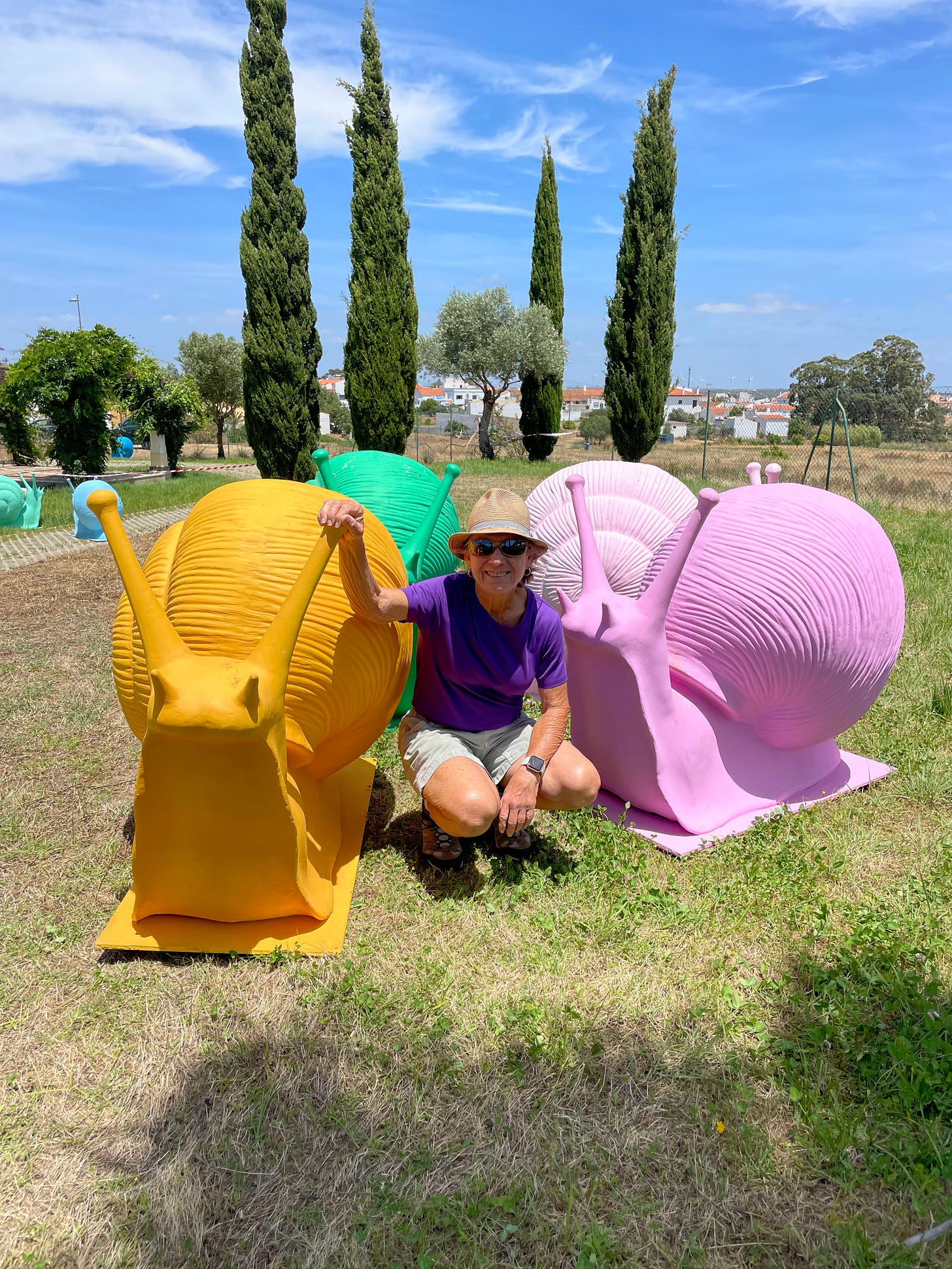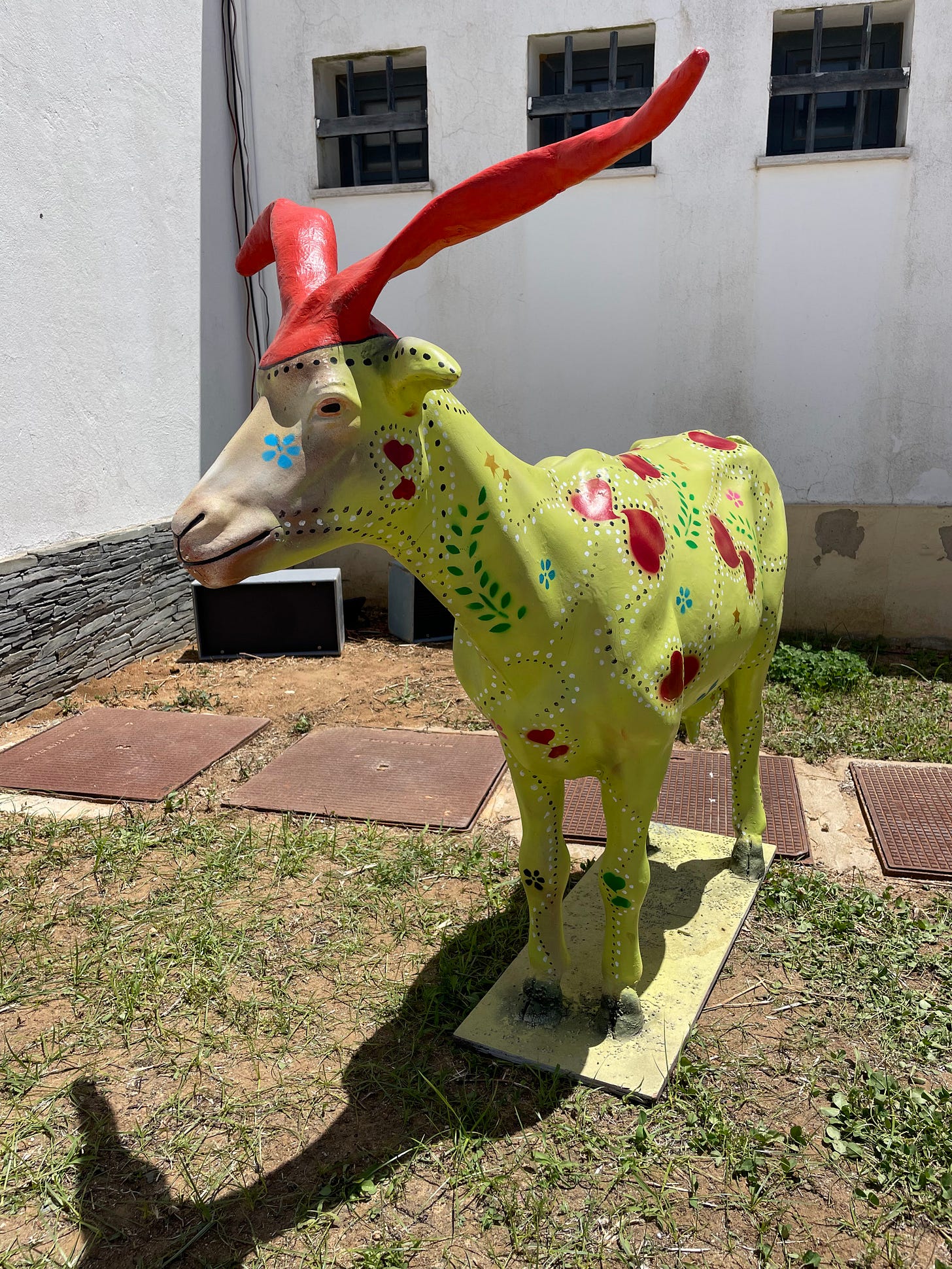We had seen signs around town with a lovely goat. They were advertising a fair in Azinhal at the end of May. A quick Google Map search showed that Azinhal was a short 16-minute drive from our home. And so, we were off…
Azinhal
A Google search of Azinhal does not provide a whole lot of information. The entire Wikipedia post is just 25 words:
Azinhal is a freguesia (parish) in the municipality of Castro Marim (Algarve, Portugal). The population in 2011 was 522,[1] in an area of 68.16 km2(26.32 sq mi). — Wikipedia.com
I did find a short write-up on Guiadacidade.pt. Akin to the realtor that describes a property as “cozy” meaning “small” or “charming” meaning it is “old”; this site uses the phrase “the ‘other’ Algarve” when referring to tiny, remote villages without a beach. I went back and checked … they used the exact phrase when describing Foz de Odeleite, the village we visited on our Guadiana boat trip.
Another site, called LikedPlaces.com does provide a bit more information … which, of course, we failed to read before heading out for the day. The cheese factory they described is minuscule and on our visit did not offer any samples or products to buy. There were artisans at the fair weaving cane into baskets and we did see signposts for the walking paths in the area. We definitely will return to explore them further and to try the sweet cakes that are a local specialty.
Algarve Goats
The fair lasted three days and provided lots of variety: lectures, demonstrations, lots of opportunities to eat, listen to musical groups, and purchase local crafts. However, the star of the fair is the Algarve Goat, the best of which were displayed at this event.
With impressive horns and occasionally wooly coats, it was hard to resist this docile yet inquisitive creature. I learned this breed resulted by crossing the Algarve health goat and the Moroccan goat in the 16th Century, and then centuries later the Spanish Alpine goat was added. An adult weighing about 50 kilos provides meat and milk. We had hoped to find a goat cheese seller, but failed!

Fighting Fires
In researching the Algarve Goat I also found several articles suggesting that the goats could assist in mitigating wildfires. In fact, in 2019, Portugal began a pilot project to assess its effectiveness:
As Raphael Minder reports for the New York Times, the populations of rural towns have thinned out—a trend consistent with other parts of Europe as well. Such towns were once made up of dozens of shepherds and goatherds with numerous flocks feeding on the underbrush of the rugged landscape. As the population ages and moves away, the land—no longer tended by livestock roaming the hills—turns into overgrown thickets. … Because of this the Portuguese government now allocates 50 percent of its firefighting budget to prevention measures, up from 20 percent in 2017. A very small slice of the budget includes a program that incentivizes shepherds to keep their herds grazing in rural areas. … Returning goats to the countryside is a logical solution to help especially remote villages minimize the burns. The pilot program, costing just a few thousand euros, was developed by the country’s forest service. So far, about 40 to 50 shepherd and goatherds are signed up, along with nearly 11,000 goats, Minder reports. —- Smithsonian Magazine
I am not certain if this program has expanded from its original pilot in 2019, though I did find a 2021 article about it here. I also found that the practice is being used in Spain and closer to our former home … California. Watch the YouTube video below to learn more:

Next Week: why do the Portuguese live longer and check out Olhão.









There are goat rental businesses in the Carolinas…especially good for clearing kudzu!
Goat milk good